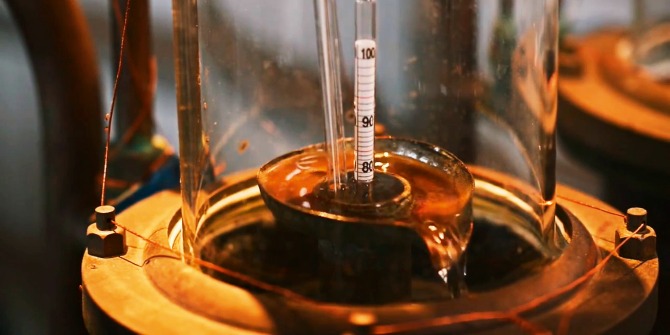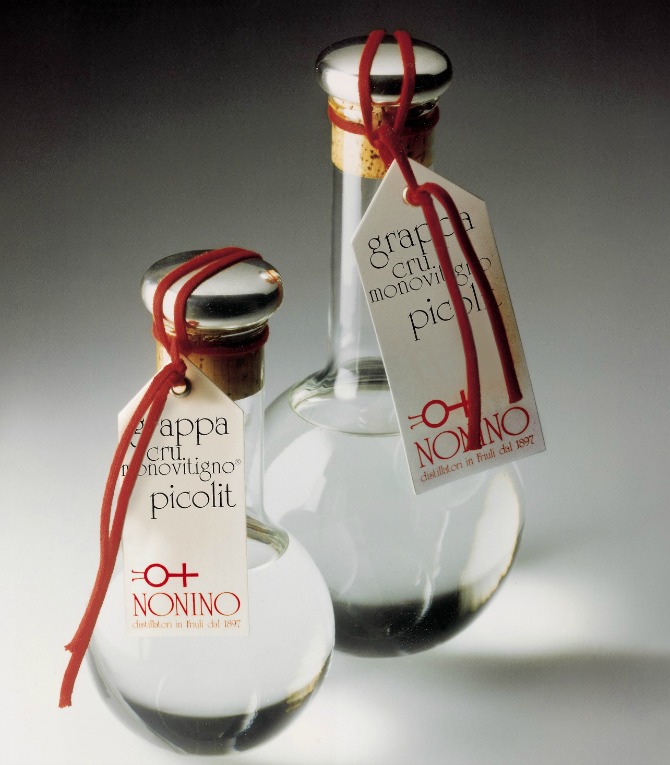
Quality, we know, is often necessary, but it’s far from a sufficient condition for market status. Better technologies lose format wars — as Betamax did against the inferior VHS videotape in the 1980s, and as artisanal bakeries did to industrial mass producers.
Losing status, however, is much easier than gaining it. Ask law firms, accounting firms, even universities how they might break into the elite status group within their industry, and there is typically no response. Turning low into high status is profoundly difficult — irrespective of quality, and especially if the starting point is from the base of the market status pyramid.
In the case we discuss below — Italian grappa — several attempts by entrepreneurs to improve the status of grappa and of their artisanal production methods resulted in failures and even bankruptcy — even though the quality of the product was superb. But Italian grappa did achieve the dramatic status move from the bottom to the top of the status ladder. It rose from a plebeian underdog of whisky and cognac to become a lifestyle product served at eminent social gatherings and offered by starred restaurants. How did this happen?
Until the 1970s, Italian grappa was considered a cheap, almost stigmatized beverage consumed at the margin of society and as being only appropriate for workers, peasants and alpine soldiers. It was associated with stigmatized artisanal and even clandestine production in hidden shacks. At the time, artisanal family firms were considered primitive — paradoxical in a country that would later give rise to the Slow Food Movement that praised such organizations. It is intriguing, therefore, that it was a young lady, Giannola Nonino — the wife of Benito, an exceptional distiller but marginal entrepreneur in the North Italian Friulian province — who turned the savoury spirit from a social no go to an hedonic must of Italian after-dinner tasting.
Giannola and her family, thanks to their Grappa di Picolit, created a beachhead into the expensive high status category occupied by foreign spirits; other artisanal producers followed and, eventually, the whole meaning of grappa in Italian society turned on its head. Grappa became “lo spirito nazionale,” at equal level with whisky and cognac (see figure below).
Figure 1. Category positions in the superordinate class of spirits in the Italian market

What can we learn from this story on how to elevate the status of a whole market category? We discovered that turning a weak low status position into a strong high status one is possible thanks to theorization by allusion — in other words, by performing a sort of cultural judo, never attacking directly the powerful market incumbents while relying on a perfect understanding of the cultural context of the market and of the own distinctive strengths.
Fundamentally, the strategy of allusion is based on three interconnected tactics:
- Detach yourself from the category in which customers put you. You should first confuse your customers and stakeholder. Giannola designed the bottle and presented herself in a way that contradicted restaurateurs’ and critics’ expectations on what grappa is and should be. When looking at the design and shape of the tiny minimalist bottle (see picture below) they wondered: ‘Is this grappa?’ When confronted with a young passionate lady dressed in Armani fashion, sommelier in restaurants were puzzled, but listened. Moreover, although the Noninos initially gave their precious bottles as gifts to prominent Italians, afterwards the price of Grappa di Picolit was set at an ‘astronomical’ level — again, as a way of distancing themselves from the low status traditional ‘grappa’ category. Finally they avoided any direct cooperation with grappa producers. They sought to avoid any risk of stigma by association. In the first stage of status elevation you should avoid bad company. All these tactics detached the product form the grappa category. But, puzzling your customers and stakeholders is not enough—you need a second tactic…
 Source: picture by Aldo Ballo, courtesy of Nonino
Source: picture by Aldo Ballo, courtesy of Nonino
- Emulate a proximate high status category. In other words, in addition to confusing potential clients and consumers you should provide a key by which to answer the confusion. The Noninos, supported by the anarchist maverick food and wine critic Luigi Veronelli, did so by adopting the vocabulary and practices of high status French wine (single grape, appellation of origin, cru). They also networked and convinced distinguished wine sales agent to distribute their grappa. And they directly addressed sommeliers in reputed restaurants. Doing so gave these stakeholders a language for talking about grappa in distinguished terms. Importantly, emulation is not the same as directly competing with high status members of the category in which you are located – the Noninos did not try and emulate and thus directly challenge premium cognac nor whisky.
- Engage in storytelling that connects tradition and cultural innovation. All of the previous tactics and efforts will be useless if you fail to engage in appropriate storytelling. It is necessary to embed and engage your product in stories beyond your immediate market, stories that resonate with wider cultural debates. Such cultural engagement is pivotal. Otherwise, why should a sommelier or a wine critic believe in the analogy between grappa and French wine? The Noninos used a kind of tightrope storytelling. On the one hand they reinterpreted and praised fading cultural traditions and national institutions: they fought for the preservation of traditional Friulian grapes, boldly presented themselves as a family business, promoted artisanal methods as authentic, and linked their bottles to traditional Venetian glass manufacturing. On the other hand, they connected grappa to the emerging Milanese art design and fashion movements and launched a Literary Award to anchor their story to an upward wave of national identity affirmation that resonated with the values of the Italian emerging elites.
It is unlikely that the push for radical status elevation could be delegated to a PR agency. What we learned from this case is that unusual success only occurs when authentic messages are conveyed by authentic messengers that put their face and themselves at stake. And status dynamics of market categories are not important for consumer products only! Consider that institutional entrepreneurs are much needed in our organizations if we want to address the grand challenges of our times. Take these two examples: How to elevate the status of vegetarian meals in order to favour the reduction of carbon-intensive meat and dairy consumption? Or how to reduce the status of private in comparison to public transportation for the same aim?
How to turn a brand’s friends (and detractors) into evangelists: The case of Canadian wine
♣♣♣
Notes:
- This blog post is based on the authors’ paper How Cinderella Became a Queen Theorizing Radical Status Change published in Administrative Science Quarterly, December 2016.
- The post gives the views of its authors, not the position of LSE Business Review or the London School of Economics.
- Featured image credit: Nonino grappa distillery, by Riccardo Cattapan, ©Nonino
- Before commenting, please read our Comment Policy.
 Giuseppe Delmestri is Professor of Change Management in the Management Department of WU Vienna University of Economics and Business.
Giuseppe Delmestri is Professor of Change Management in the Management Department of WU Vienna University of Economics and Business.
 Royston Greenwood is TELUS Professor of Strategic Management at the School of Business, University of Alberta, and Professorial Fellow, University of Edinburgh.
Royston Greenwood is TELUS Professor of Strategic Management at the School of Business, University of Alberta, and Professorial Fellow, University of Edinburgh.






1 Comments